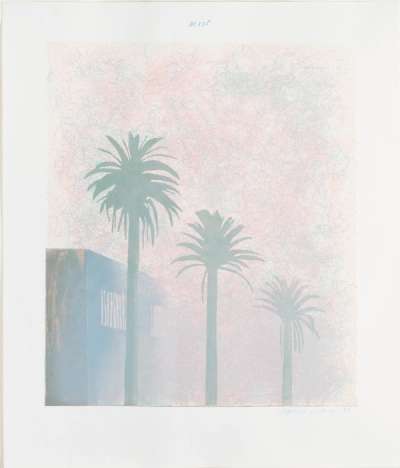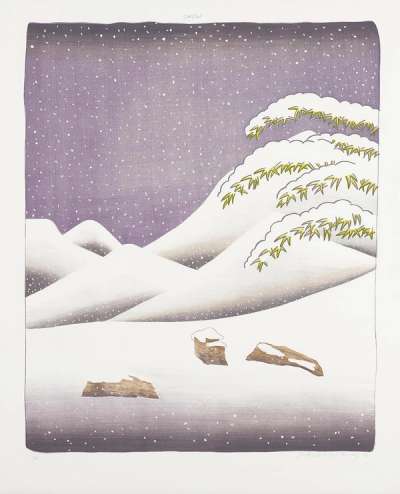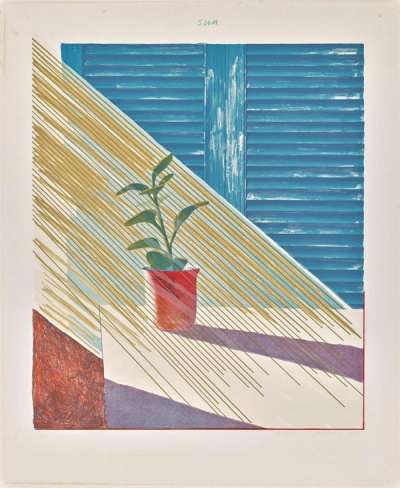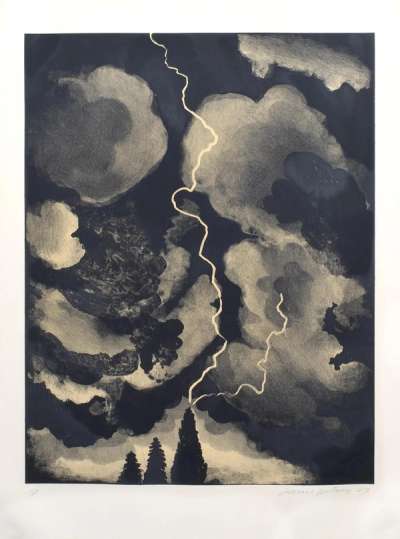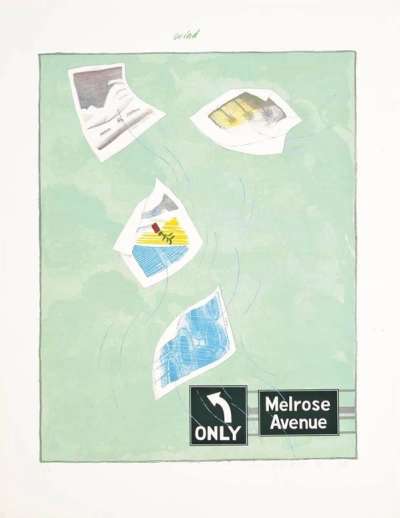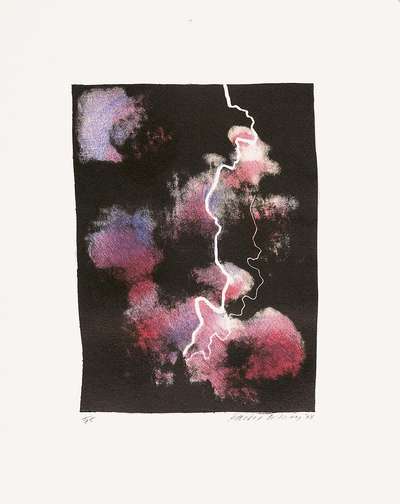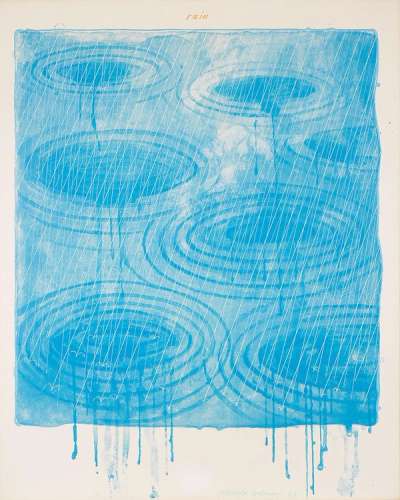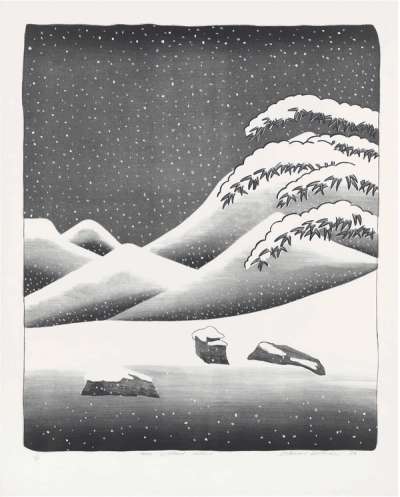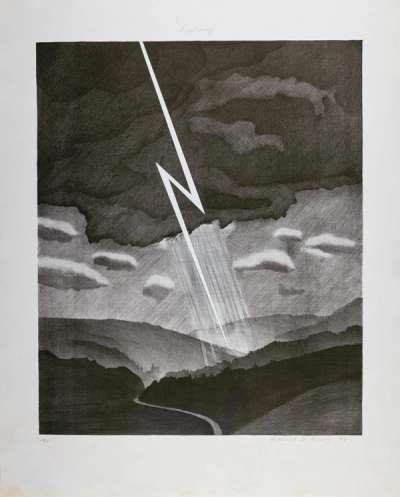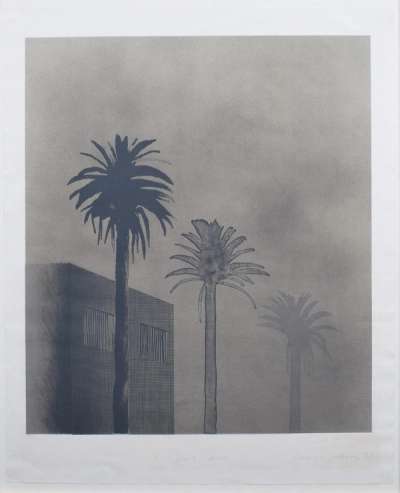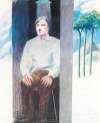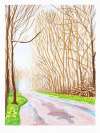The
Weather Series
David Hockney has long been fascinated with Japanese art and culture, and nowhere is this more evident than in his 1973 suite, The Weather Series. Hockney was also particularly taken by the woodblock printing tradition and many of the prints in this series reference the Ukiyo-e style, and particularly the work of Japanese masters Hokusai and Hiroshige.
David Hockney The Weather Series For sale
The Weather Series Value (5 Years)
Works from the The Weather Series series by David Hockney have a strong market value presence, with 116 auction appearances. Top performing works have achieved standout auction results, with peak hammer prices of £181468. Over the past 12 months, average values across the series have ranged from £13000 to £65000. The series shows an average annual growth rate of 12.09%.
The Weather Series Market value
Auction Results
| Artwork | Auction Date | Auction House | Return to Seller | Hammer Price | Buyer Paid |
|---|---|---|---|---|---|
 Lightning David Hockney Signed Print | 24 Oct 2025 | Christie's New York | £17,850 | £21,000 | £29,000 |
 Mist David Hockney Signed Print | 24 Oct 2025 | Christie's New York | £34,000 | £40,000 | £50,000 |
 Sun David Hockney Signed Print | 28 Sept 2025 | Abell | £38,250 | £45,000 | £60,000 |
 Snow David Hockney Signed Print | 18 Sept 2025 | Phillips London | £42,500 | £50,000 | £70,000 |
 Wind David Hockney Signed Print | 22 Oct 2024 | Sotheby's New York | £15,300 | £18,000 | £24,000 |
 Dark Mist David Hockney Signed Print | 15 Nov 2023 | Sotheby's Online | £17,850 | £21,000 | £28,000 |
 Small Study Of Lightning David Hockney Signed Print | 15 Nov 2023 | Sotheby's Online | £5,100 | £6,000 | £8,500 |
 The Weather Series (complete set) David Hockney Signed Print | 28 Oct 2023 | Christie's New York | £144,500 | £170,000 | £230,000 |
Sell Your Art
with Us
with Us
Join Our Network of Collectors. Buy, Sell and Track Demand
Meaning & Analysis
Hockney’s striking 1973 suite, The Weather Series, captures the artist’s long-time fascination with Japan and Japanese culture.
Hockney first visited Japan in 1971 after breaking up with Peter Schlesinger. This trip inspired paintings such as Mount Fuji and Flowers and his famous photo collages of the Zen Garden at the Ryoanji Temple in Kyoto. Hockney was also particularly taken by the woodblock printing tradition and many of the prints in this series reference the Ukiyo-e style, and particularly the work of Japanese masters Hokusai and Hiroshige.
Works such as Snow and Rain from the series feel very close to this tradition, with their evocative and yet minimal scenes of water in its various states, while elsewhere Hockney’s unique vision of LA filters through. Works such as Mist feature the city’s iconic palm trees – while at the same time referencing Monet’s painting of poplar trees along the River Epte – and Wind depicts a road sign for Melrose Avenue, placing us squarely on the west coast.
Wind also reminds us of Hockney’s love for self-referencing and doubling – seen in earlier series such as A Hollywood Collection – as he depicts prints from the series being blown away into the sky in a reference to Hokusai’s Ejiri in the Suruga Province (a work that would also later be referenced by photographer Jeff Wall). For the Sun print of the series, Hockney has chosen a classic subject from his oeuvre, a still life in a bright interior, where a plant basks in rays of sunlight that complement the lines of the shutters just behind. Finally, in Lightning we catch a glimpse of his unmistakable landscape style, featuring a winding road and hills on either side, a composition he favoured for his later depictions of Yorkshire as well as Southern California. This work, the only monochrome piece of the series, and dominated by a lightning bolt that adds instant narrative to the scene, recalls his 1969 series of etchings, Illustrations For Six Fairy Tales From The Brothers Grimm.
